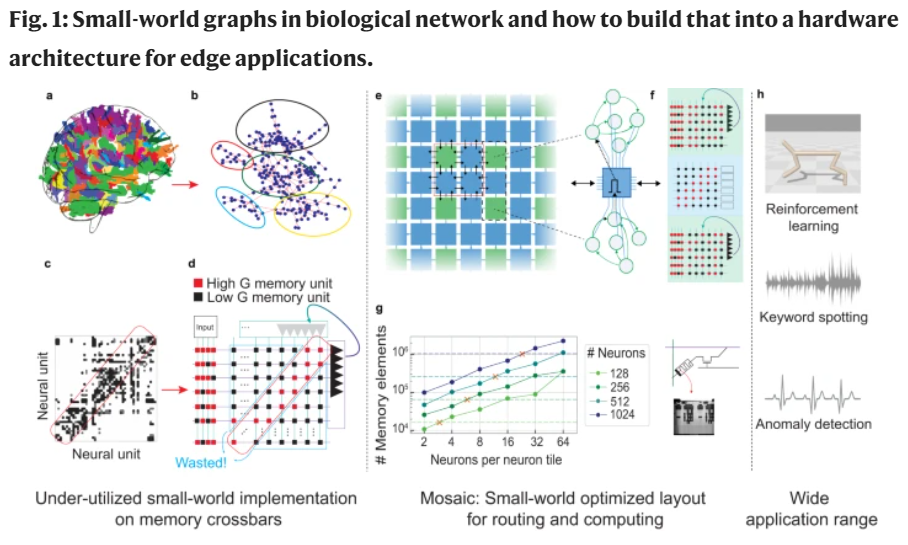Mosaic: a novel neuromorphic artificial neural network circuit architecture
Filippo Moro, Yigit Demirag, Giacomo Indiveri, and Melika Payvand from the Institute of Neuroinformatics (INI) of ETH Zurich and the University of Zurich introduced a new hardware Architecture called the Mosaic. It is inspired by the small-world connectivity of the brain, with significant power reduction for routing information on Neuromorphic systems. Their study was recently published in the journal "Nature Communications".

Despite millions of years of evolution, the fundamental wiring principle of biological brains remains preserved: Dense local and sparse global connectivity, aka small-worldness, optimizing both computation and the utilization of the underlying biological substrate.
Inspired by these principles, researchers at the Institute of Neuroinformatics (INI) introduce Mosaic: a 2D analog systolic array comprised of densely connected, small neuron tiles (RNNs), which communicate with proximity neighbour RNNs through router tiles. Mosaic uses both in-memory computing and in-memory routing via RRAMs to achieve orders of magnitude reduction in routing energy compared to current accelerators.
This study was done as a collaboration between INI and CEA-LETI in France.
Links
- external page Mosaic: in-memory computing and routing for small-world spike-based neuromorphic systems (Nature Communications)
- external page Institute of Neuroinformatics (INI)
- external page Interview with Prof. Melika Payvand on her research on using resistive memory for "making machines think at different time scales"